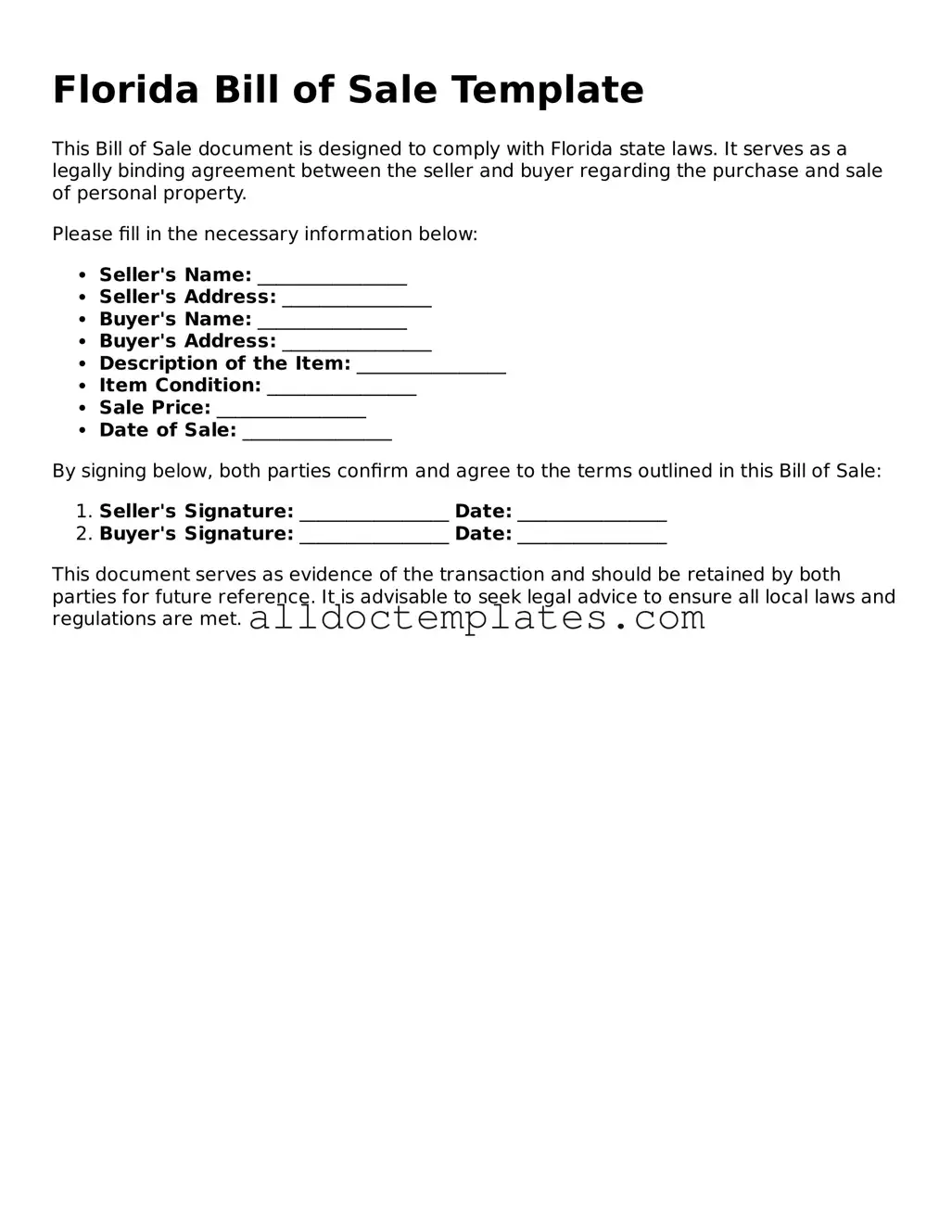Free Bill of Sale Document for Florida State
A Florida Bill of Sale form is a legal document that serves as proof of the transfer of ownership of personal property from one party to another. This form is essential for ensuring that both the buyer and seller have a clear record of the transaction. Understanding its components and proper usage can help facilitate smooth exchanges, whether for vehicles, boats, or other personal items.
Get Your Form Now
